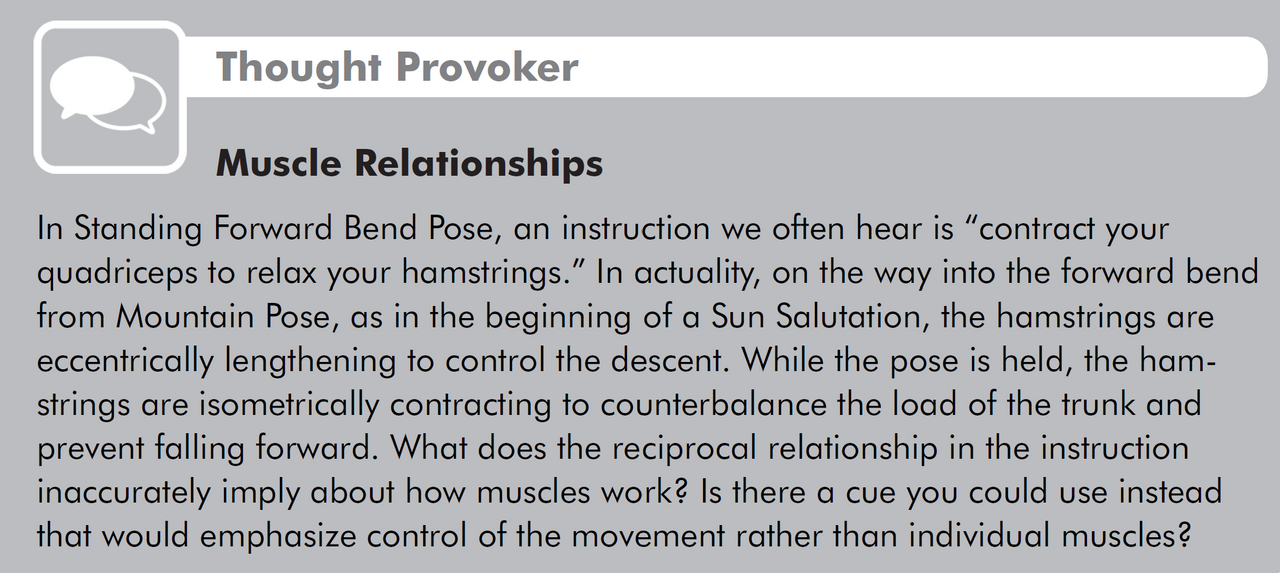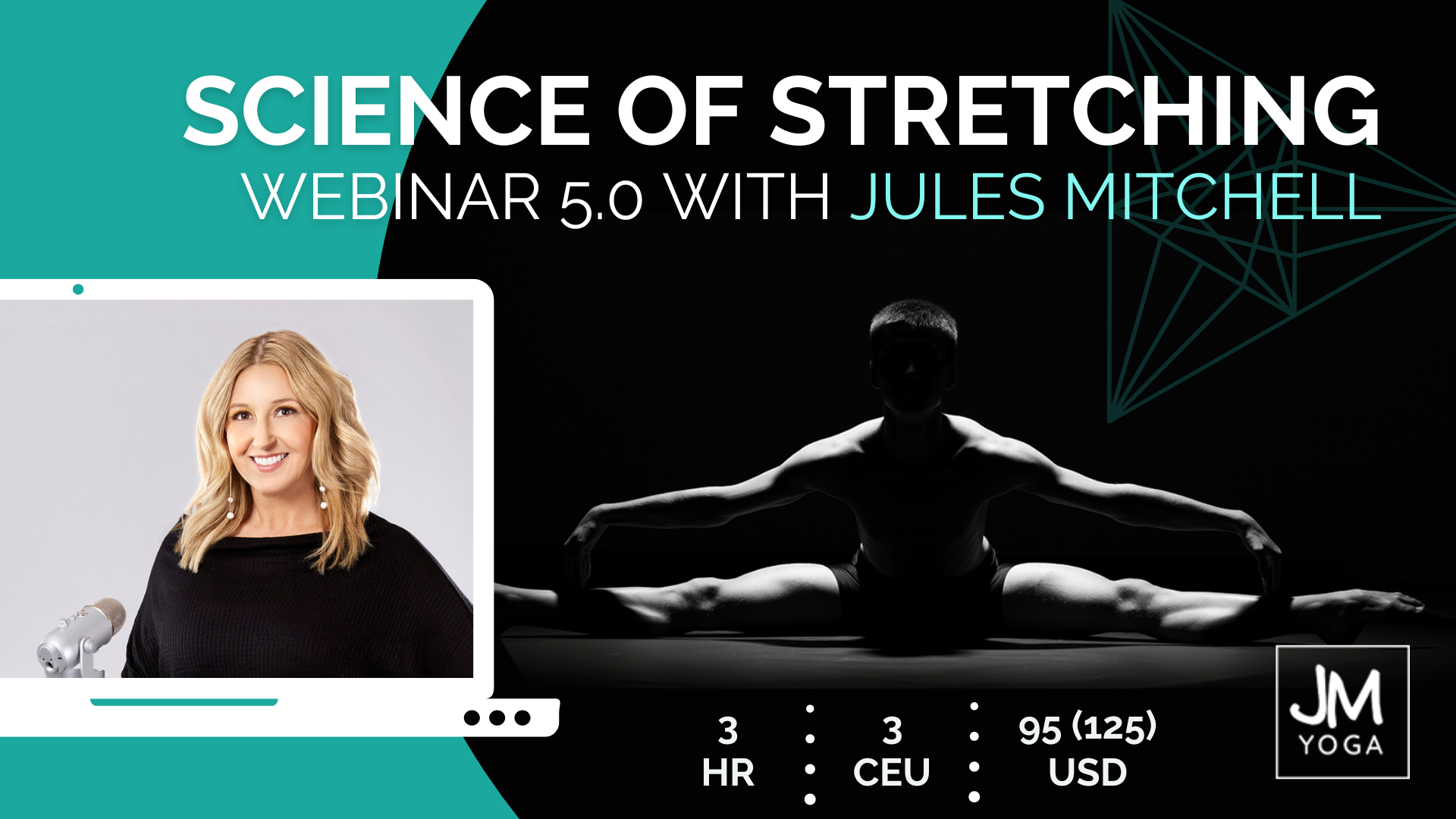Eccentric contractions require greater cortical involvement. The brain lights up during eccentric actions.
How we learn anatomy doesn’t always explain how anatomy works. I’m sure somewhere along your anatomy journey, you covered how muscles work and how contraction types differ. Concentric contractions are shortening contractions, eccentric contractions are lengthening contractions, and in isometric contractions, there is no change in length. Got it.
Then at the same time, you may have been taught an on/off reciprocal relationship between opposing muscle groups. Makes sense. Empirically, when I contract my quads in a seated forward bend, I go deeper into hip flexion so it makes sense that the hamstrings are off. They aren’t?
And also, figuring out how to modify yoga poses to deliberately target a certain contraction type for a specific joint range may not have been something you spent a lot of time doing. I’m also guessing a deep dive into the benefits of eccentric focused work wasn’t really a part of the journey either.
A big part of my work is to help teachers totally embrace this topic and know it well enough that they could teach it to someone else.
For this weekend’s Thought Provoker, I’m sharing one from page 65 in my book. I’m also offering a reading from page 64, listen here.

The Way I Would Answer
There are two parts to this question and I’ll address them each individually, then possibly riff a bit after.
Part One
This reciprocal relationship implies that flexibility is a function of a muscle being “off.” It leads you to believe that engaging the front muscle groups will turn off the back muscle groups (aka the resistance) and you’ll go deeper into the stretch. It’s not really that way in practice, however. If you were measuring EMG of the quads and hamstrings, you’d most likely get a spike in both! It’s more likely that when you engage the muscles that flex the hip and straighten the knee, that you get…wait for it…. more hip flexion and knee extension. Just think of it more about the action (or movement) instead of the opposing side fighting it. The opposing side has to be involved because movement isn’t about a single muscle’s job.
Part Two
As far as cueing, there are so many options here. A simple inquiry could work: “Engage your legs as you hinge from your hips. As gravity assists you into the forward bend, can you sense the back of your legs controlling your descent?” I always love the open-ended cue: “What strategy do you employ in the legs to pull yourself a bit further into the pose? Where does the sensation of stretch and/or muscle engagement occur and can you organize yourself in such a way that feels strong and supported in whatever range you settle?” Notice the positive spin here? I’d love to hear the cues you’ve come up with!
Part Three
The riff. I think the hardest part for new teachers to grasp is the concept that the brain can only send an impulse that results in a concentric contraction. Therefore, eccentric contractions occur through an opposing force that overrides the attempt to shorten the muscle (as in the example in the Thought Provoker). This is where biomechanics comes in, mainly force vectors. The force vector created by gravity is always normal (perpendicular to the earth’s surface). But as soon as you add other applied loads (walls, straps, assisted stretches, sliding surfaces with varying degrees of friction, etc.) you can really experience eccentrics on a whole new level. Sometimes you can focus on building strength gains, but sometimes you can focus on the cortical involvement and learning that occurs during eccentrics. Paying attention to eccentrics really reveals to you how much control you really have through a range. It’s actually more mentally exhausting than physically exhausting!
Extend Your Learning:
Online Education With Jules

The Science of Stretching Webinar 5.0
This webinar is for teachers and students who have an insatiable curiosity about stretching, what it does, and how it works, while accepting that conventional stretching wisdom isn’t always accurate. Eligible for 3 CEUs. This course is offered in January and July each year. Learn more >
